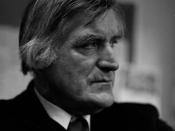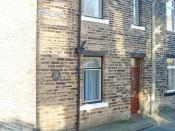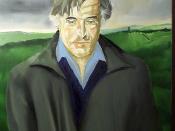"Hawk Roosting" is one of the many poems published by Ted Hughes during his literary career dealing with animal and nature. In this poem we have a Hawk who thinks that everything in nature is inferior to him and he will allow no change in his life. The stylistic devices used by Hughes make this poem harsh and dynamic showing us an aggressive, unsentimental and gloomy image of the Hawk and at the same time realistic, which help to mirror the character of the Hawk.
The poem is written in six regular stanzas, each consisting of four verses (quatrain) and this emphasize on the uniformity of thought on the part of Ted Hughes and the Hawk. The world of the Hawk is regimented, neat, well organized, controlled and the regularity in the form of the poem matches those qualities very well. The fact that there is no development in the form at the end of Hawk Roosting indicates that the Hawk will not compromise till the very end of the poem:
"Nothing has changed since I began.
My eye has permitted no change. I am going to keep things like this."
Since the poem has no discernable rhyming scheme, it clearly indicates that the life of the Hawk too does not have any restrictions and he has full freedom. The physical representation of the poem is strictly directed by the haughtiness of the Hawk as it prevents several attempts at punctuation, for example, the end of stanza three continues into stanza four without any punctuation. Through the use of stylistic devices like end stopped line and enjambment, Ted Hughes makes the manifestation of the superciliousness of the Hawk in the poem more evident.
The Hawk is the speaker of the poem and we see the world through his eyes via...


